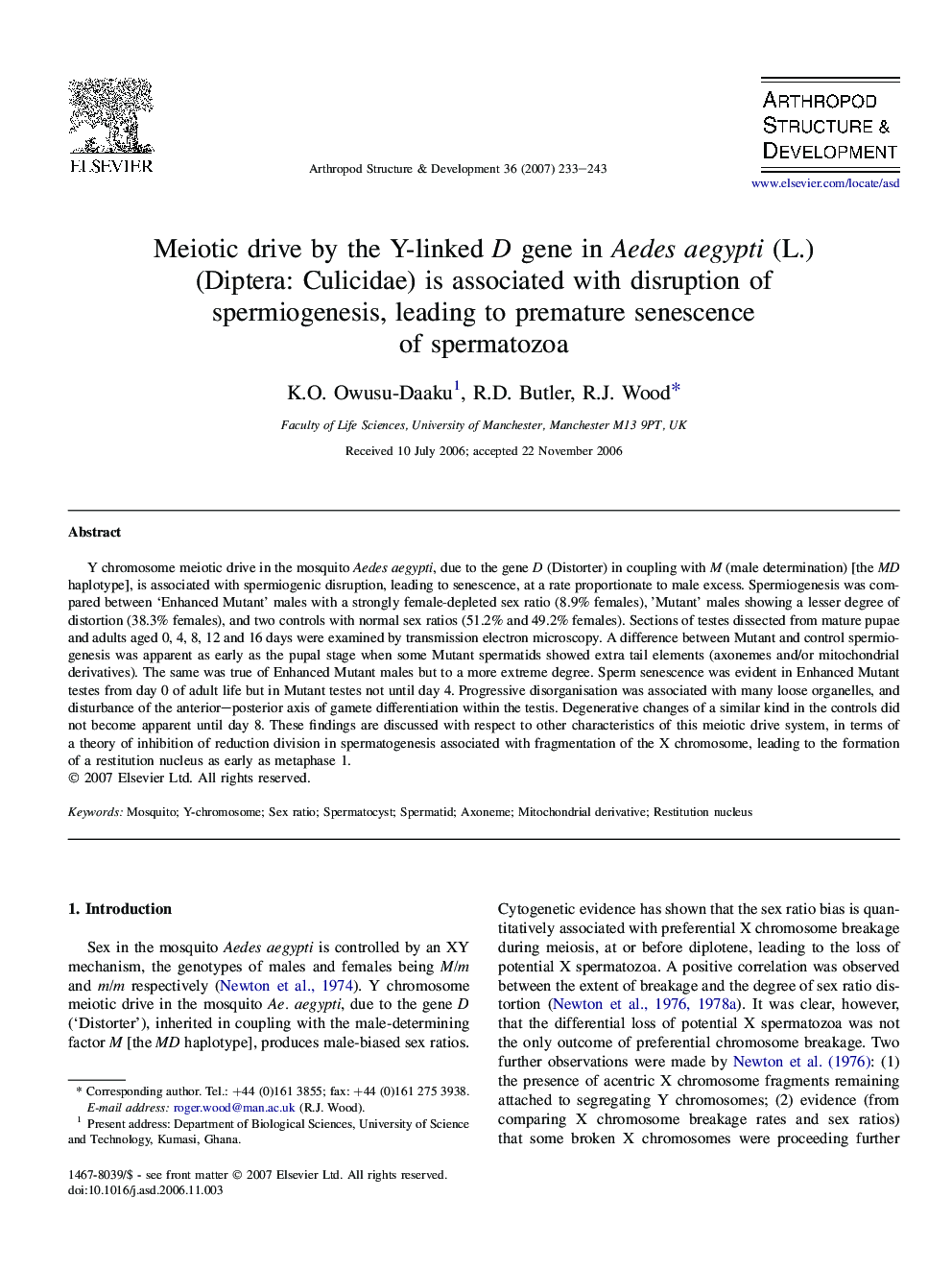| Article ID | Journal | Published Year | Pages | File Type |
|---|---|---|---|---|
| 2778998 | Arthropod Structure & Development | 2007 | 11 Pages |
Y chromosome meiotic drive in the mosquito Aedes aegypti, due to the gene D (Distorter) in coupling with M (male determination) [the MD haplotype], is associated with spermiogenic disruption, leading to senescence, at a rate proportionate to male excess. Spermiogenesis was compared between ‘Enhanced Mutant’ males with a strongly female-depleted sex ratio (8.9% females), ’Mutant’ males showing a lesser degree of distortion (38.3% females), and two controls with normal sex ratios (51.2% and 49.2% females). Sections of testes dissected from mature pupae and adults aged 0, 4, 8, 12 and 16 days were examined by transmission electron microscopy. A difference between Mutant and control spermiogenesis was apparent as early as the pupal stage when some Mutant spermatids showed extra tail elements (axonemes and/or mitochondrial derivatives). The same was true of Enhanced Mutant males but to a more extreme degree. Sperm senescence was evident in Enhanced Mutant testes from day 0 of adult life but in Mutant testes not until day 4. Progressive disorganisation was associated with many loose organelles, and disturbance of the anterior–posterior axis of gamete differentiation within the testis. Degenerative changes of a similar kind in the controls did not become apparent until day 8. These findings are discussed with respect to other characteristics of this meiotic drive system, in terms of a theory of inhibition of reduction division in spermatogenesis associated with fragmentation of the X chromosome, leading to the formation of a restitution nucleus as early as metaphase 1.
